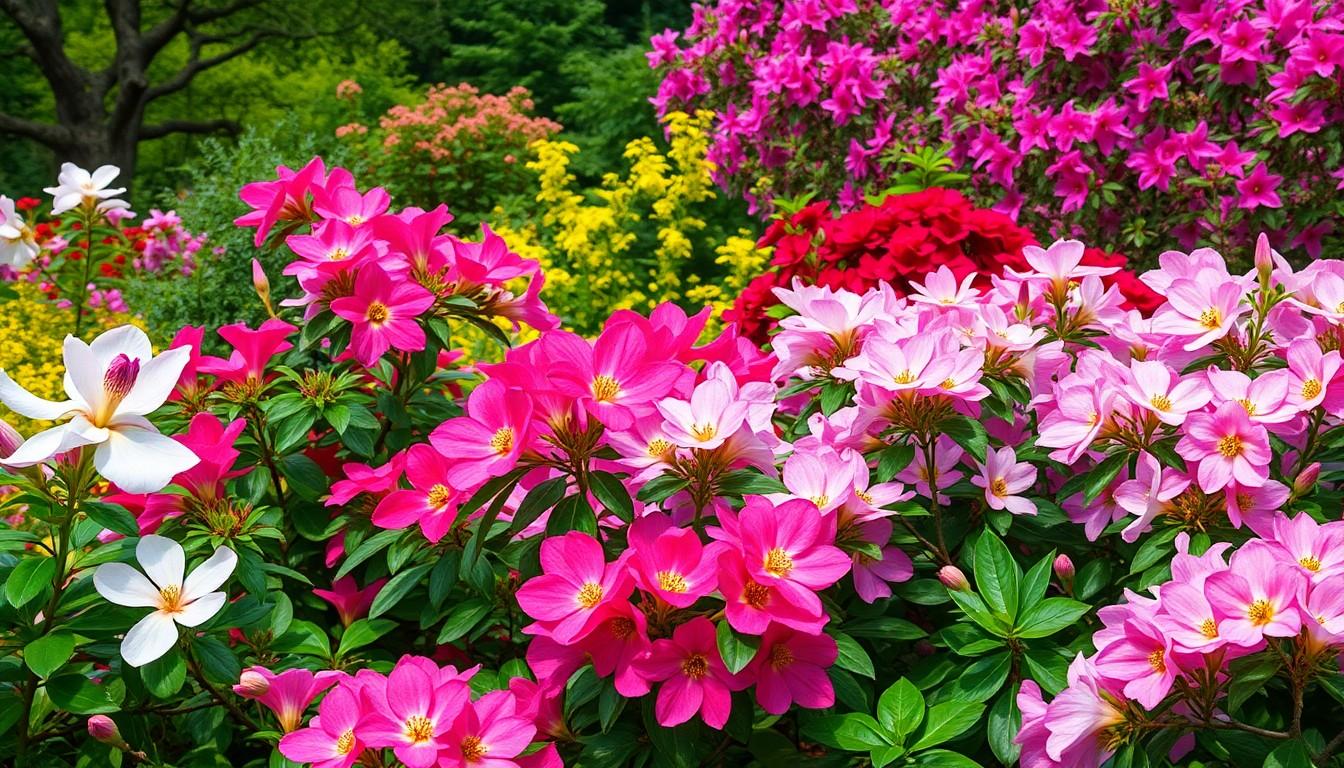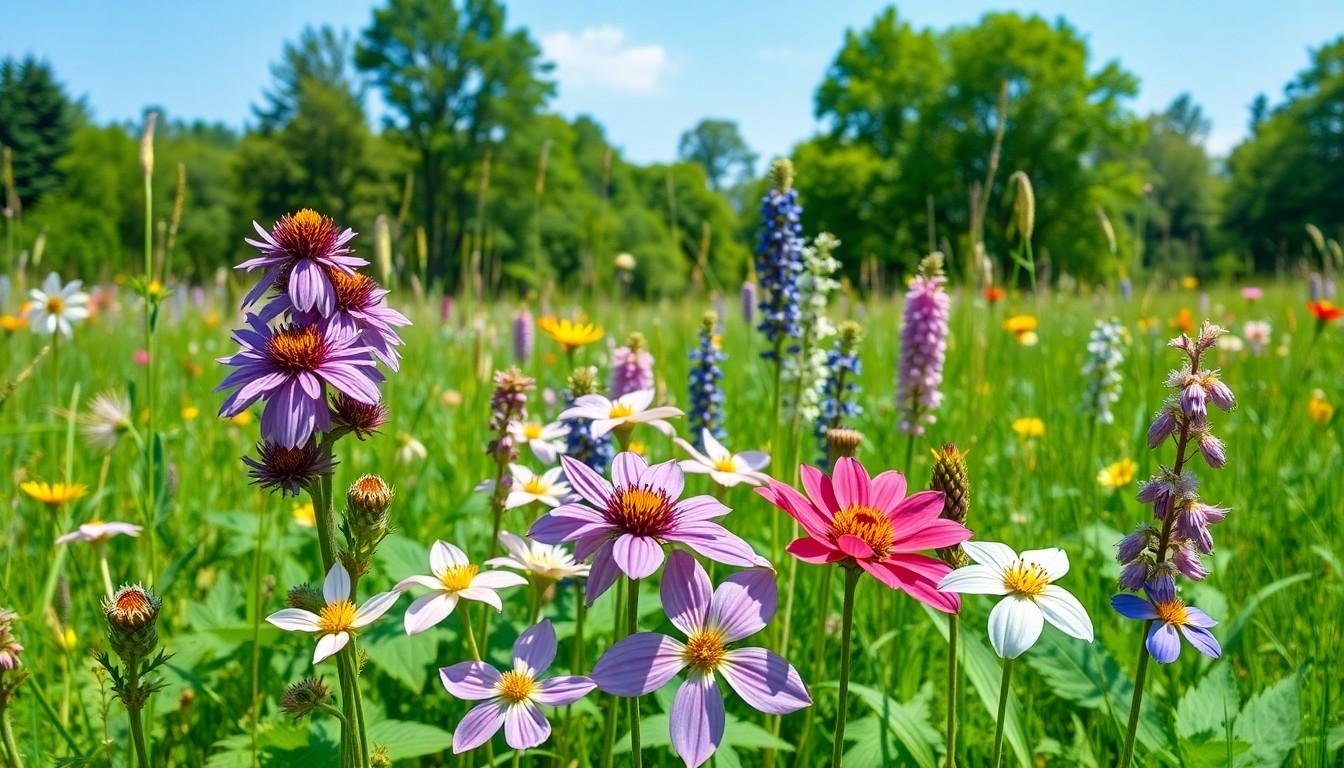Phone:
(701)814-6992
Physical address:
6296 Donnelly Plaza
Ratkeville, Bahamas.

North Carolina is a floral wonderland that’ll make any garden enthusiast swoon. With its diverse climate and rich soil, this state boasts a vibrant array of flowers that bloom from the mountains to the coast. Whether you’re a seasoned gardener or just someone who appreciates a good bouquet, the flowers of North Carolina have something to offer everyone.
From the iconic dogwood to the charming azalea, these blossoms not only beautify the landscape but also tell stories of the region’s culture and history. Imagine strolling through a garden bursting with color while enjoying the sweet scent of jasmine wafting through the air. It’s enough to make anyone want to stop and smell the roses—or maybe the rhododendrons! Dive into the world of North Carolina flowers and discover why they’re the perfect addition to any garden or outdoor space.
North Carolina’s diverse climate shapes its vibrant floral landscape. Regions within the state host various native and cultivated flowers that reflect the area’s beauty. Dogwood trees, recognized as the state flower, bloom exquisitely in spring with white or pink petals. Azaleas showcase bright colors, transforming gardens into stunning displays during their peak blooming season.
Many wildflowers, such as the Carolina lily and the yellow jessamine, thrive in natural habitats. Gardening enthusiasts often admire these native species for their resilience and ability to attract pollinators. Furthermore, cultivars like the hydrangea and peony enhance residential gardens with their striking blossoms.
The state experiences a humid subtropical climate, offering ideal conditions for extended growing seasons. This climate allows for a rich variety of flowering plants, from springtime blossoms to late-summer blooms. Southern magnolia trees grow prominently, adding a fragrant touch with their large, creamy flowers.
In addition to aesthetic appeal, many flowers in North Carolina hold cultural significance. For instance, the dogwood symbolizes faith and resilience, deeply rooted in local traditions. Exploring the rich variety of blooms invites individuals to appreciate their beauty and ecological importance.
Florists and gardeners often use indigenous plants to promote sustainability and biodiversity. Incorporating these varieties helps create ecosystems that support local wildlife. Engaging with North Carolina flowers can inspire individuals to develop lush gardens and vibrant outdoor spaces.

North Carolina is home to many stunning native flower species that thrive in its unique climate. These blooms are integral to local ecosystems and support wildlife.
Wildflowers represent the state’s rich biodiversity. Species like the vibrant purple coneflower and the delicate trillium offer visual splendor and habitat for pollinators. Larkspur and buttercup add bursts of color to meadows and forests. Field and woodland settings often showcase blooming plants that attract butterflies and bees, enhancing the ecological balance. Observing these wildflowers in their natural habitat fosters appreciation for North Carolina’s natural beauty.
Flowering trees and shrubs contribute significantly to North Carolina’s floral landscape. The eastern redbud dazzles with its pink blossoms that herald spring, while the sweetbay magnolia reveals creamy white flowers that emit a pleasant fragrance. Dogwood trees stand out with their iconic blooms and cultural symbolism. Azaleas thrive as both shrubs and flowering plants, presenting a kaleidoscope of colors across gardens and parks. These trees and shrubs add dimension and allure to landscapes, creating scenic displays throughout the seasons.
North Carolina offers a wealth of options for gardeners and landscapers, making it easy to create stunning outdoor spaces. Various flowers thrive in the state’s climate, allowing for creativity and diversity in garden design.
Ornamental flowers serve as focal points in North Carolina gardens. The vibrant azalea stands out in spring with its colorful blooms while gardenias exude a sweet fragrance throughout the growing season. Flowering dogwoods, recognized for their iconic white and pink petals, provide visual interest and attract pollinators. Coreopsis, known as tickseed, blooms abundantly and attracts butterflies. These choices enhance both beauty and biodiversity.
Seasonal blooms add dynamic flair to gardens in North Carolina. Spring brings the enchanting bloom of redbuds and dogwoods, creating a colorful landscape. In summer, sunflowers and coneflowers dominate, providing bright splashes of color. Fall showcases goldenrods and asters, enriching gardens with their hues. Winter brings the striking beauty of camellias, offering color during colder months. Each season features flowers that transform landscapes, keeping gardens visually engaging year-round.
North Carolina’s floral diversity faces several challenges, necessitating conservation efforts.
Habitat loss poses a significant threat to native flowers in North Carolina. Urban development reduces natural spaces, diminishing habitats essential for various species. Invasive plants further complicate matters, outcompeting native flowers and disrupting local ecosystems. Additionally, climate change affects blooming patterns, impacting pollinators’ life cycles and the overall health of flower populations. Pesticides and herbicides also contribute to the decline of vital native species.
Organizations across North Carolina implement various strategies to protect native flowers. Restoration projects focus on reintroducing indigenous plants to degraded habitats, revitalizing local ecosystems. Conservationists conduct educational programs, teaching the importance of native flora and its role in sustainability. Partnerships between government entities and environmental groups foster protective legislation that aims to preserve critical habitats. Community involvement through native plant initiatives encourages residents to plant local species, enhancing biodiversity in urban and suburban areas.
Selecting the right flowers for North Carolina’s diverse climate ensures a vibrant garden. Native species, such as the dogwood and azalea, thrive in local conditions and attract pollinators effectively.
Understanding the soil type is essential for successful growth. Conduct a soil test to determine pH and nutrient levels. Most North Carolina flowers prefer well-drained soil enriched with organic matter. Adding compost helps improve soil quality and provides essential nutrients.
Watering techniques play a crucial role in flower cultivation. Flowers generally need about an inch of water per week. During dry spells, a deep watering approach encourages robust root development.
Choosing the right planting time optimizes flower growth. Early spring marks the best time for planting perennials, while summer suits annuals. Taking local frost dates into account prevents damage to young plants.
Fostering biodiversity enhances the garden’s resilience. Mixing various species not only adds visual interest but also attracts beneficial insects. Incorporating native plants, such as purple coneflowers and trilliums, promotes ecological balance.
Pruning promotes healthy growth and flowering. Removing spent blooms encourages new flowers, while cutting back leggy growth maintains shape. January and February often serve as ideal months for pruning trees and shrubs.
Implementing mulch helps regulate soil temperature and moisture. Apply a layer of organic mulch around plants to suppress weeds and retain moisture. Maintaining about 2 to 3 inches of mulch keeps the soil consistent.
Monitoring for pests ensures flower health. Regular inspections reveal potential problems early, allowing for timely intervention. Employing integrated pest management practices reduces reliance on chemicals and supports ecological health.
North Carolina’s floral landscape is a vibrant testament to its unique climate and rich biodiversity. With a stunning array of native and ornamental flowers, it offers endless possibilities for gardeners and nature lovers alike. The cultural significance of blooms like the dogwood and azalea enriches the state’s heritage, while the resilience of wildflowers supports local ecosystems.
As conservation efforts continue to protect these natural treasures, individuals can play a vital role by embracing native plants in their gardens. This not only enhances personal outdoor spaces but also contributes to the sustainability of North Carolina’s beautiful floral diversity. Exploring this enchanting world of flowers can inspire creativity and foster a deeper connection to the environment.